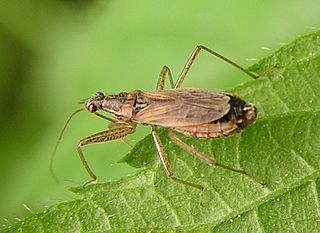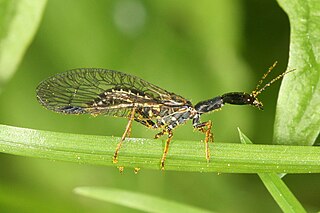
Conidae, with the current common name of "cone snails", is a taxonomic family of predatory sea snails, marine gastropod molluscs in the superfamily Conoidea.

The chachalacas, guans and curassows are birds in the family Cracidae. These are species of tropical and subtropical Central and South America. The range of one species, the plain chachalaca, just reaches southernmost parts of Texas in the United States. Two species, the Trinidad piping guan and the rufous-vented chachalaca occur on the islands of Trinidad and Tobago respectively.

Rhagonycha is a genus of soldier beetle belonging to the family Cantharidae. There are at least 140 described species recorded from Europe, North America and Japan, and thought to date from the Upper Eocene to recent periods.

Planorbis is a genus of air-breathing freshwater snails, aquatic pulmonate gastropod mollusks in the family Planorbidae, the ram's horn snails, or planorbids. All species in this genus have sinistral or left-coiling shells.

Alderflies are megalopteran insects of the family Sialidae. They are closely related to the dobsonflies and fishflies as well as to the prehistoric Euchauliodidae. All living alderflies – about 66 species all together – are part of the subfamily Sialinae, which contains between one and seven extant genera according to different scientists' views.

Arctia villica, the cream-spot tiger, is a moth of the family Erebidae. The species was first described by Carl Linnaeus in his 1758 10th edition of Systema Naturae. It is distributed from the Iberian Peninsula across western and southern Europe, Anatolia, western and northern Iran, western Siberia, southwestern Asia and North Africa.

Nabis is a genus of damsel bugs in the family Nabidae.

Chironomini is a tribe of midges in the non-biting midge family (Chironomidae).

Inocelliidae is a small family of snakeflies containing 8 genera of which one is known only from fossils. They are commonly known as inocelliid snakeflies. The largest known species is Fibla carpenteri known from fossils found in baltic amber.

Phaeostigma is a Palaearctic genus of snakeflies in the family Raphidiidae.

Rhynocoris is a genus of assassin bug, family (Reduviidae), in the subfamily Harpactorinae. Species are recorded from Asia, mainland Europe, Africa and North America.

Melanargia is a genus of butterflies belonging to the family Nymphalidae and the subfamily Satyrinae.

Raphidiidae is a family of snakeflies in the order Raphidioptera.

Dysdercus is a widespread genus of true bugs in the family Pyrrhocoridae; a number of species attacking cotton bolls may be called "cotton stainers".
Euura amerinae is a species of sawfly belonging to the family Tenthredinidae. The larvae form galls on bay willow. It was first described by Carl Linnaeus in 1758.

Dichrostigma is a genus of snakeflies in the family Raphidiidae. There are about five described species in the genus.

Xanthostigma is a genus of snakeflies belonging to the family Raphidiidae.
Fibla is a genus of snakeflies belonging to the family Inocelliidae.

Inocellia is the Palaearctic type genus of the family Inocelliidae: belonging to the snakeflies and their allies. Distribution records are from mainland Europe and Asia: especially in the more temperate zones.

















